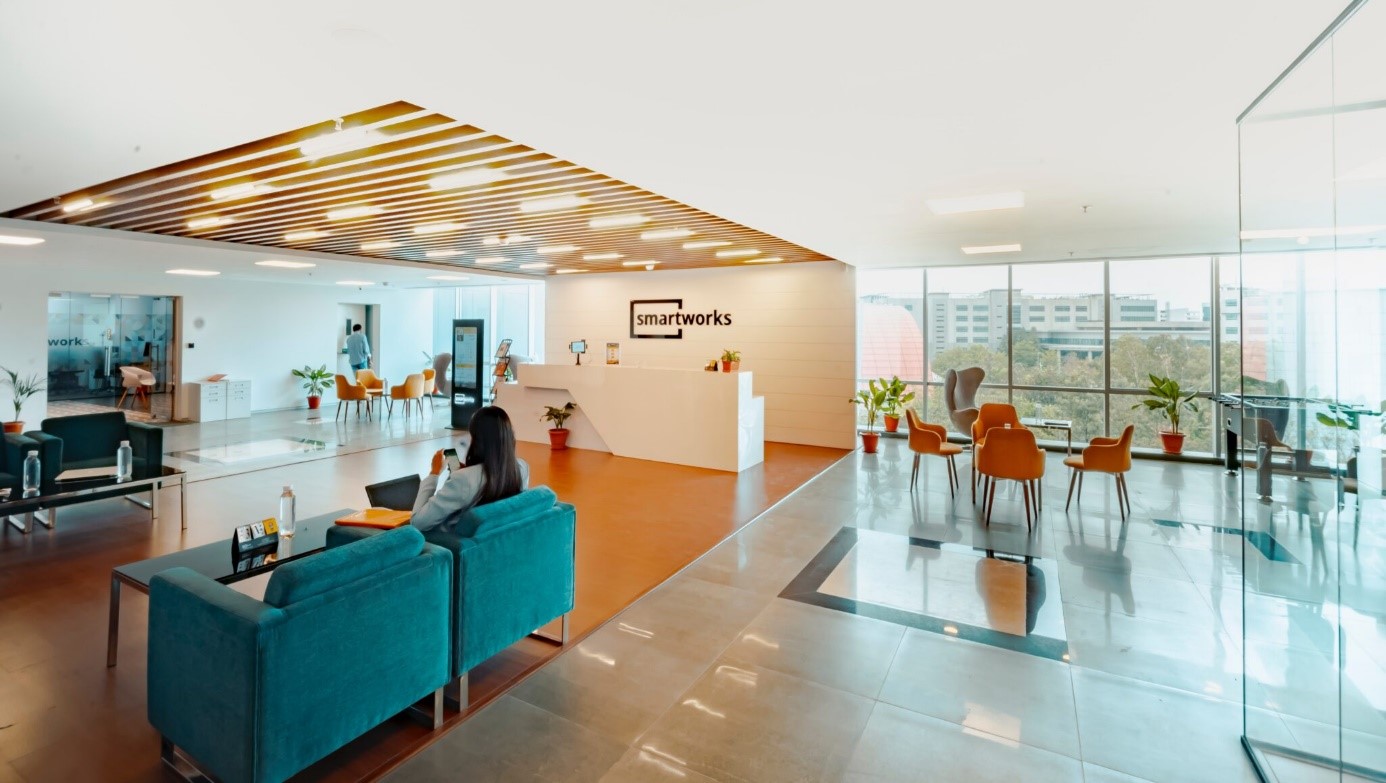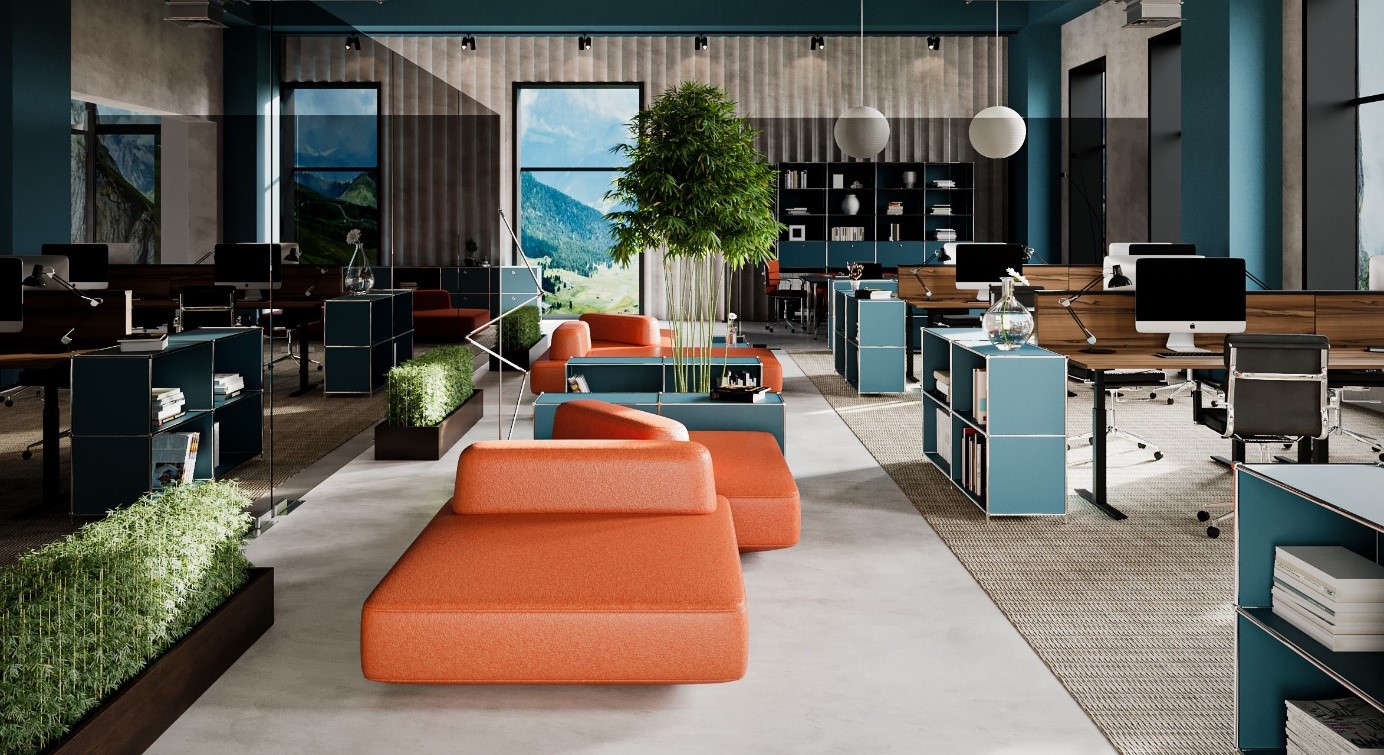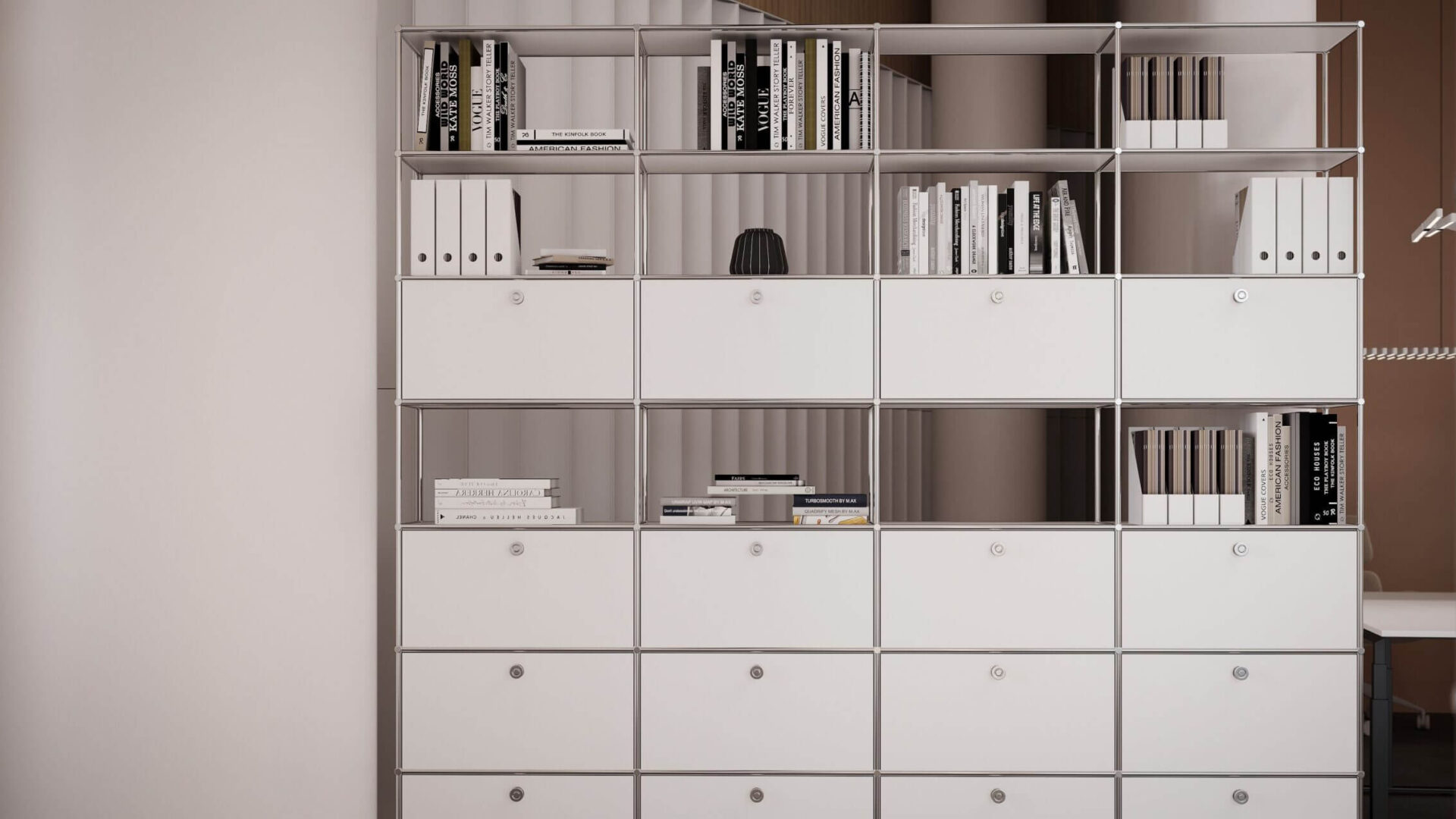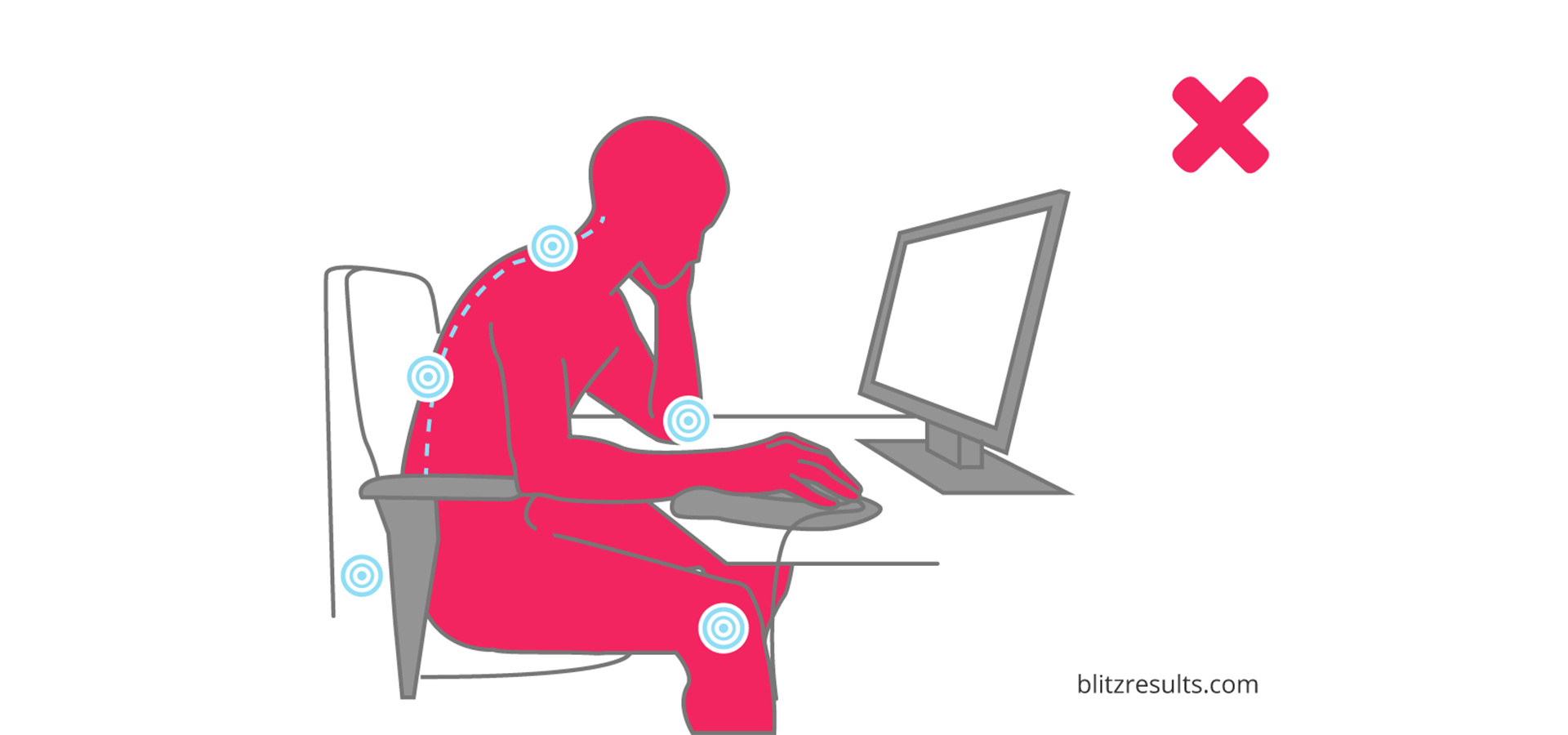Modern office concepts: discover how to increase your team’s performance

The labor market is undergoing a huge change, as the working hours of baby boomers are coming to an end. The younger generations dominate the labour market and place different demands on the working environment and job content. Baby Boomers have been accustomed to traditional office structures, clear hierarchies, and fixed workplaces, while Millennials and Gen Z have grown up with new technologies and a more flexible work culture and often prefer an open, collaborative and flexible work environment. Modern office concepts are therefore in demand!
Mastering the challenges of demographic change

Who wouldn’t strive to work more agile, efficient and innovative with a highly motivated team and at the same time find personal meaning and meaningfulness in their work? But how can this be achieved?
For young companies with a very homogeneous age structure, this task is potentially easier. Companies that employ different generations, on the other hand, need to balance different needs and expectations to create a positive work environment for everyone. Flexibility and the ability to combine different office concepts help to meet the needs of different generations and create a harmonious working environment.
The most important differences in a nutshell:
Work environment and culture: Baby Boomers and Generation X have grown up with traditional office structures and often appreciate a clear hierarchy and fixed workplaces. Millennials and Gen Z, on the other hand, have grown up with new technologies and are already familiar with a more flexible work culture. They often prefer an open, collaborative and flexible work environment.
Technology and digital tools: Gen Z are the first generation to have grown up in a high-tech world. They are well-versed in the use of digital tools and expect a modern working environment with the latest technologies.
Working hours and flexibility: Gen Z often appreciates more flexible working hours and the ability to work remotely. They value work-life balance and want to balance their work with other activities.
Collaboration and social interaction: Gen Z are highly socially connected and values collaboration and interaction with colleagues. Open office concepts and shared workspaces can accommodate them.
Career prospects and company values: Gen Z often shows a strong interest in company culture, social responsibility, and the opportunity to do meaningful work. They are inclined to choose companies that align with their values.
What is meant by the term office concept?
Definition
The term “office concept” refers to the structural and organizational approaches used in the design and furnishing of offices. The aim is to optimize the working environment so that it meets the needs and requirements of the employees, the company and the work itself.
What aspects does an office concept include?

An office concept encompasses various aspects that can vary in importance depending on the company and corporate culture. Essential elements are:
- Office and workplace design: that is, the physical arrangement of desks, meeting rooms, rest areas, etc., to ensure efficient use of available space and an optimal working environment.
- Flexibility: since the possibilities, needs and requirements are subject to major changes due to developments in technology, work culture and society, office concepts should be able to be adapted as easily as possible. Flexibility is therefore an important aspect for modern office concepts. This can be achieved, for example, through modular furniture, adaptable workspaces and mobile technologies.
- Technology integration: Office concepts often involve the integration of new technologies to optimize employee communication, collaboration, and productivity.
- Ergonomics: The consideration of the ergonomic design of working environments: furniture, tools and lighting to promote the health and well-being of employees.
- Employee involvement: Good office concepts are created when the opinions and needs of employees are consciously recorded and taken into account. A positively perceived work environment creates employee satisfaction and can increase productivity.
- Sustainability: A growing trend in modern offices is the integration of sustainable practices, such as the paperless office, the use of environmentally friendly materials, energy efficiency measures and recycling initiatives.
What modern office concepts are there?
Open Space (Open Office):

Open office landscapes without permanently assigned workstations, which are intended to promote collaboration and communication between employees.
Advantages:
- Encourages collaboration and communication by making it easy for employees to approach each other.
- Flexibility in the design of workplaces and the use of office space.
- Cost savings, as fewer rooms and furniture are required.
Disadvantages:
- Noise and distractions can affect concentration and productivity.
- Lack of privacy and constant observation can lead to stress.
- No fixed jobs can lead to disorder and conflict.
Coworking spaces

Collaborative workspaces used by various companies and self-employed people to share costs and take advantage of networking opportunities.
Advantages:
- Networking opportunities through cooperation with various companies and self-employed people.
- Cost savings through shared resources and infrastructure.
- Flexibility, as most coworking spaces offer flexible membership options.
Disadvantages:
- Possible confidentiality and privacy issues due to cooperation with other companies.
- Noise and distractions, similar to open space offices.
- Less control over the work environment as space is shared.
Activity-Based Working (ABW):

Different work areas are created that correspond to the different tasks of the employees, such as quiet zones, creative spaces or concentration areas.
Advantages:
- Offers a variety of workspaces tailored to employees’ different tasks and work styles.
- Can increase employee satisfaction and productivity by allowing employees to choose the space that best suits their current job.
- Can optimize the use of office space and reduce vacancies.
Disadvantages:
- Can be challenging in terms of managing spaces and resources.
- Employees may struggle to adapt if they don’t have a permanent job.
- Requires thorough planning and ongoing review to ensure that the spaces meet the needs of employees.
Agile working environment

Inspired by agile methodologies in project management, flexible workspaces are created to foster collaboration, innovation, and adaptability among employees.
Advantages:
- Fosters collaboration, innovation, and rapid adaptation to change.
- Allows teams to customize their work environment as needed.
- Supports agile methodologies such as Scrum or Kanban.
Disadvantages:
- Not every type of work or team is a good fit for an agile work environment.
- Can lead to a lack of structure and clarity if not properly managed.
- Requires a culture of openness and trust that is not present in every company.
Home Office Remote Work (Teleworking)

The ability to work from home or from any other location outside the office.
Advantages:
- Provides flexibility to employees and can improve work-life balance.
- Reduces commute times and can save on office space costs.
- Allows companies to hire talent regardless of geographical restrictions.
Disadvantages:
- Communication and collaboration can be more difficult.
- Employees can feel isolated, and company culture can suffer.
- Requires good self-organization and a suitable home working environment.
Green Office (Sustainable Offices)

Office concepts with a focus on sustainability, ecological materials, energy efficiency and environmentally friendly practices.
Advantages:
- Reduces the company’s environmental footprint and can contribute to the achievement of sustainability goals.
- Can improve employee well-being, e.g. through improved air quality or natural lighting.
- Can promote a positive corporate image and attract customers or employees who value sustainability.
Disadvantages:
- May require higher initial investments, e.g. for ecological building materials or energy efficiency technologies.
- Not all environmentally friendly measures can be implemented in every office building.
- Achieving sustainability goals can be difficult to measure and verify.
Hybrid work models for your office

A combination of office work and telecommuting to provide flexibility and meet the individual needs of employees.
Advantages:
- Provides a balance between the flexibility of telecommuting and the benefits of collaborative office work.
- Can improve employee satisfaction and productivity by allowing employees to choose where they want to work based on their task, preference, or personal circumstances.
- Can save on office space costs when fewer fixed workstations are needed.
Disadvantages:
- Can make managing communication, collaboration, and resources more complicated.
- Risk of a “two-tier society” if not all roles and employees are equally well suited for teleworking.
- Requires clear policies and technologies to effectively support both office work and telecommuting.
Conclusion on modern concepts for the office
The choice of the appropriate office concept depends on various factors. The nature of the work, the needs of the employees and the corporate culture are essential factors. Many companies combine different concepts to create an individual solution that best suits their specific requirements. It is important that the chosen concept takes into account the needs of the employees and promotes a positive and productive working atmosphere, as well as optimally supports the goals of the company.
The traditional office concept

The traditional office is not “modern”, but it is still widespread. This is the classic model, where all employees have their own fixed workplaces. It often consists of individual offices for executives and open workspaces for other employees.
In recent years, there has been a clear trend towards more modern office concepts such as open space, coworking and hybrid working models. Nevertheless, traditional companies often continue to hold on to their traditional office structures. Decisive factors are often:
- Familiarity and habit: Traditional companies and long-standing employees often prefer the familiarity of familiar structures.
- Privacy and concentration: Certain professions or activities require a high degree of privacy and concentration, which can be better guaranteed in a single office.
- Investment and infrastructure: It can be costly to change office infrastructure, and some companies may stick to their traditional office concept for financial reasons.
How modern is my office concept?
Different companies need different concepts for a modern office. Older employees often appreciate the familiar traditional office structures and fixed workplaces. Young colleagues, on the other hand, tend to prefer an open, collaborative and flexible working environment. Companies should therefore take into account their individual requirements and the specific needs of their employees in order to choose the most suitable office concept. Combining different concepts can be helpful. Here are some of the main reasons why companies use different office concepts:
Flexibility: The world of work has become more dynamic and diverse. Companies are well advised to be able to meet requirements for different working styles and requirements. Different office concepts offer flexibility and allow employees to do their work efficiently depending on the task at hand and personal preferences.
Productivity and collaboration: Some office concepts, such as open space or activity-based working, promote collaboration and the exchange of information between employees in particular. Open work environments can facilitate communication and thus improve collaboration between teams and departments.
Creativity and innovation: Modern office concepts often pay particular attention to the promotion of creativity and innovation. They offer inspiring spaces and environments designed to stimulate the creative mindset of employees.
Cost optimization: Certain office concepts, such as coworking spaces, can help companies reduce costs by allowing them to share resources and infrastructure with other companies.
Employee retention and well-being: An adapted office concept can help to retain and motivate employees. A pleasant working environment often increases the well-being and satisfaction of employees.
Technological progress: New technologies and increasing digitalization make it possible to realize advanced office concepts that allow a high degree of flexibility with regard to the place of work and the ways of working.
Environmental aspects: Sustainable office concepts are in line with the growing awareness of environmental friendliness and help to reduce a company’s ecological footprint.
What are open space offices?
Open space offices are a type of office concept in which employees work in a large, open space rather than in individual, enclosed offices. Often, different work zones are set up where teams can meet for specific projects or tasks. This concept is in line with the trend towards non-territorial workplaces and desk sharing, where workplaces are no longer permanently assigned to an employee, but can be used by anyone who needs them.
Advantages of open-plan offices
Open space offices offer numerous advantages, both for the company and for the employees. They promote communication and collaboration by breaking down physical barriers and facilitating the exchange of ideas. Costs can also be saved by sharing office space.
Another advantage is the flexibility: Thanks to the open design, rooms and workplaces can be quickly and easily adapted to changing requirements. In addition, employees can choose the most suitable workplace for them depending on the task and are not tied to a fixed position.
Challenges of open space offices
However, despite the many advantages, open-plan offices are not equally suitable for all companies and employees. Challenges can arise, especially in terms of concentration and privacy. Noise and interruptions can affect work efficiency, and it can be difficult to find a quiet place for focused work or confidential conversations.
In addition, an open space office needs good office planning and setup to be effective. Otherwise, it can turn into a disorganized, chaotic space where no one really feels comfortable.
Questions & Answers on modern office concepts
History and background of new office concepts
Most of the changes and innovations in office concepts have occurred in the last decade of the 20th century and in the early 21st century. In the 1990s, companies began to question traditional office structures and explore new approaches to designing work environments.
Introduction of open space: In the 1990s, the concept of the open space office became popular. The idea that open work environments facilitate communication and collaboration between employees gained momentum.
Emergence of the New Economy: With the rise of technology companies and the New Economy, the world of work changed dramatically. Startups and IT companies introduced new working models that relied on flexibility and creativity.
Coworking concepts: In the late 2000s and early 2010s, coworking spaces became increasingly popular. These shared offices offered independent professionals and small teams flexible working opportunities and the chance to exchange ideas in an inspiring environment.
Technological advancement: Advances in technology allowed companies to adopt innovative office concepts based on connected devices, collaborative tools, and smart workplace solutions.
Focus on employee well-being: In recent years, employee well-being in the workplace has become increasingly important. Office concepts have been designed to create healthier and more ergonomic working environments.
Activity-Based-Working (ABW): The ABW concept, in which different workspaces are made available for different tasks, has become increasingly popular.
Home office and remote work: The proliferation of technology and internet connections has allowed companies to offer remote work opportunities. During the Covid pandemic, even the home office obligation was introduced – in phases.
Conclusion: Many changes have taken place in recent decades. However, office concepts will continue to change in the future. The generational change of workers will give greater weight to the expectations of the younger generation.
Frequently Asked Questions
What will the office concept of the future look like?
In the office concept of the future, technology and design merge in revolutionary ways to create flexible, healthy and productive working environments. Traditional office structures based on individual desks and static workstations are increasingly being replaced by dynamic layouts that promote teamwork, creativity and employee well-being. Technological innovations such as virtual reality, AI-powered tools, and advanced collaboration software enable seamless communication and collaboration, whether employees are working in the office or remotely. In addition, the office concept of the future places a strong emphasis on sustainability and inclusion. Green technologies, recycling programs, and energy-efficient design help companies reduce their environmental footprint, while accessible workplaces ensure that people of all abilities have access and participation. The office of the future is thus an adaptive space that is constantly evolving to meet the changing needs of employees and the planet.
What does Flexible Office Design mean?
Flexible office design refers to workplace designs that can adapt to the varying needs and requirements of employees. Instead of rigid structures with dedicated desks, flexible design enables a dynamic working environment that makes it easy to switch between different work modes such as collaboration, concentration, communication or relaxation. Elements of flexible office design can be, for example, sliding partitions, multifunctional furniture and versatile workspaces suitable for both individual work and group projects.
Here’s how to implement flexible office design in your office:
In order to implement a flexible office design in your office, thorough planning is first required. Examine the work patterns and needs of your employees. What types of activities do they perform? How much space do they need for these activities? What kind of environment promotes their productivity and well-being? Use this information to create a design that meets the needs of your employees while leaving room for future changes and adjustments.
How do you create a good workplace and room concept?
When creating a good workplace and room concept, the needs of the employees are in the foreground. Think beyond traditional office layouts and consider aspects such as ergonomic design, natural lighting, and acoustics. In addition, it can be helpful to create different areas for different types of work – for example, quiet areas for focused work and open areas for collaboration. A well-thought-out space concept can significantly increase employee satisfaction and productivity and help promote a positive company culture.
Link to our blog: Guide to office planning & furnishing the office like a pofi
Demographic change in the Swiss labour market
Editor
Federal Statistical Office, Switzerland





